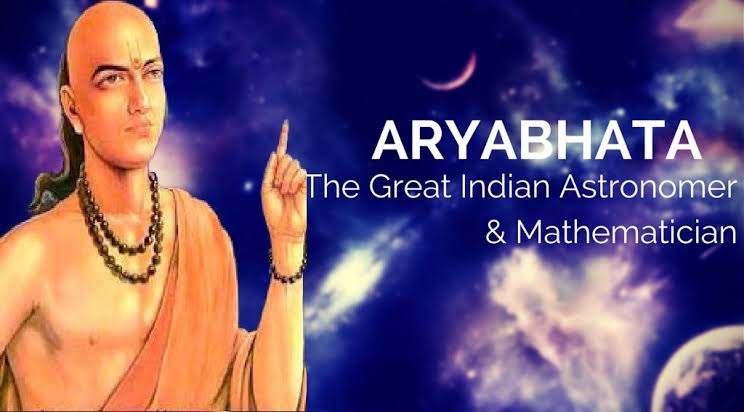Aryabhata – A Great Astronomer and Mathematician (Part – 1)

Dr. Gauri Shankar Gupta
Aryabhata (476-550 CE) was one of the greatest astronomers and mathematicians of all time. His works include Aryabhattiya and Arya-Siddhanta. While Aryabhattiya has survived the vagaries of time and is available in its original form, Arya-Siddhanta has been lost except for the later references that are available in the writings of Bhaskara and Brahmagupta. A third text, which may have survived in the Arabic translation, is Al ntf or Al-nanf. The text itself states that it is a translation by Aryabhata, but the Sanskrit name of this work is not known. Born on 21st March 475 CE in Bihar near Patliputra, Aryabhata attended Nalanda Vidyapeeth in Bihar and spent most of his later life there. His life coincided with the rule of Gupta Dynasty. Aryabhata has written about his own birth in Aryabhattiya in the 10th verse of Kalakriya Pada stating that 3600 years into Kaliyuga (499 CE) he was 23 years old. According to the Mahabharata and the Surya Siddhanta (written in 6th century BCE), Kali Yuga began on 18th February 3102 BCE soon after the end of Mahabharata war.
Aryabhattiya contains just 121 Sanskrit verses with a wealth of information on astronomy, physics and mathematics. The text is divided into the following four chapters:
- Gitika Pada – (13 verses) This chapter begins with paying tribute to Brahman – the Cosmic Spirit; and then describes methods of writing alphabetic numbers, units of measurement of time and calculation of Earth’s rotation. It describes the yuga cycles, length of a Mahayuga as 4.32 million years and that of Kalpa as 4.32 billion years.
- Ganita Pada – (33 verses) In this second chapter Aryabhata describes geometrical principles, arithmetical progressions, quadratic equations, indeterminate equations and the table of sines.
- Kalakriya Pada – (25 verses) This chapter describes the days, months and the year according to the movement of celestial bodies; planetary positions on a given day; calculation of intercalary month (अधिक मास) and the names and the number of days of the week. It also contains rules for determining the longitude of planets using eccentrics and epicycles.
- Gola Pada – (50 verses) This chapter Aryabhata describes the celestial relationship between the Earth and the cosmos and the rotation of Earth on its axis; This section also describes the trigonometric principles, motions of planets, geospatial computations and eclipsesincluding shape of the Earth, cause of day and night and the rising of the zodiac signs on horizon.
System of Alphabetical Notations: Aryabhata invented a very simple system of representing numbers through the letters of Sanskrit alphabets reducing mathematics to simple verses. This comprehensive formula has been given in the 2nd verse of Gitika Pada. Let us see how it works. 33 consonants and 9 vowels represent the numbers as given below.
क = 1 ख = 2 ग = 3 घ = 4 ङ = 5
च = 6 छ = 7 ज = 8 झ = 9 ञ = 10
ट = 11 ढ =12 ड = 13 ढ =14 ण = 15
त = 16 थ = 17 द = 18 ध = 19 न = 20
प = 21 फ = 22 ब = 23 भ = 24 म = 25
———————————————————————–
य = 30 र = 40 ल = 50 व = 60
श = 70 ष = 80 स = 90 ह = 100
———————————————————————–
अ = 100 इ = 102 उ = 104 ऋ = 106 लृ = 108
ए = 1010 ऐ= 1012 ओ = 1014 औ = 1016
Thus 33 consonants and 9 vowels make up (33×9) 297 alphabetic numerical syllables. In this comprehensive table क represents 1 while हौ represents 1018. Thus, the system allows numbers up to 1018 to be represented with an alphabetical notation.
The word कुचि for example, represents 10,600. Here क represents 1, उ represents 104 making it 10,000; च represents 6 and इ represents 102 making it 600; hence कुचिrepresents 10,600. Thus, very large numbers can be written in simple words. This allowed Aryabhata to write the most complex mathematical formulas in the form of verses. This is a fabulous way of writing numbers and coding them as well.
Sign of Zero and Place Value System:
Knowledge of zero and the place value system is a pre-requisite for inventing the alphabetical counting system given above. Obviously, Aryabhata had invented the theory of place value system even before alphabetical notation of numbers. Verse 2ndof the Ganita Pada, clearly defines the place value system in the following way.
Ekam 1
Dasham 10
Shatham 100
Shahsrtam 1000
Ayuta 10000
Niyuta 100000
Pratyuta 1000000
Koti 10000000
Arbuda 100000000
Vrunda 1000000000
He also carries out calculations on square and cubic roots which would be impossible if the numbers in question are not written according to the place value system and zero. Thus, according to the historical records available, it is clear that Aryabhata was the first person who invented Zero as well as the Place Value System. These two form the foundation of modern arithmetic.
To be continued..


